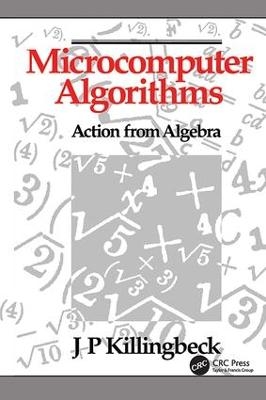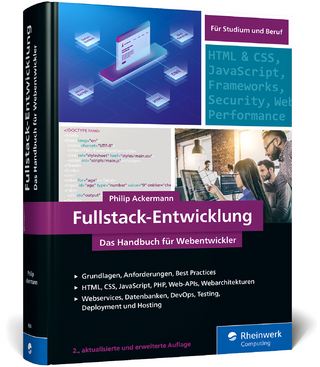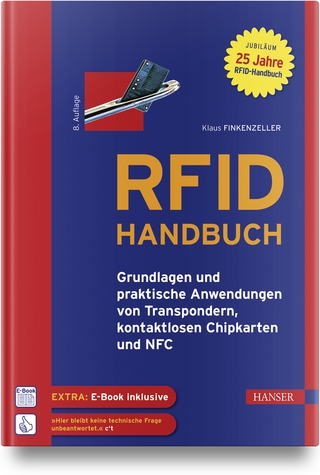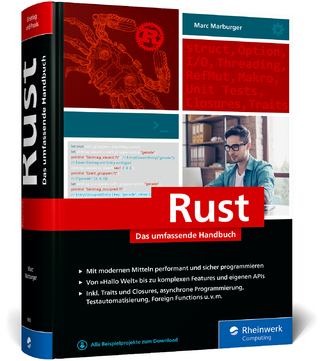
Microcomputer Algorithms
CRC Press (Verlag)
978-1-138-40224-9 (ISBN)
Although the computing facilities available to scientists are becoming more powerful, the problems they are addressing are increasingly complex. The mathematical methods for simplifying the computing procedures are therefore as important as ever. Microcomputer Algorithms: Action from Algebra stresses the mathematical basis behind the use of many algorithms of computational mathematics, providing detailed descriptions on how to generate algorithms for a large number of different uses.
Covering a wide range of mathematical and physical applications, the book contains the theory of 25 algorithms. The mathematical theory for each algorithm is described in detail prior to discussing the algorithm in full, with complete program listings. The book presents the algorithms in modular form, allowing for easy interpretation, for the adaptation to readers' specific requirements without difficulty, and for use with various microcomputers.
Blending mathematics and programming in one volume, this book will be of broad interest to all scientists and engineers, particularly those physicists using microcomputers for scientific problem handling. Students handling numerical data for research projects will also find the book useful.
John Killing beck has wrinen some eighty scientific publications, including five books. His publications range over the fields of group theory, perturbation theory and microcomputer numerical algorithms. He has been a visiting professor at the Universities of Guelph ( 197 4) and Besancon ( 1991). He was a Reader in Theoretical Physics at the University of Hull, where his plan to redeploy to computer science was halted by his enforced early retirement in 1989. He currently works part-time in the School of Mathematics at Hull, and intends to extend his freelance lecturing and writing activities.
Preface -- 1 General Introduction -- 1.1 The microcomputer style of programming -- 1.2 Modules and subroutines -- 1.3 Notation and conventions of this book -- 1.4 The program presentation format -- 1.5 Brief survey of chapter contents -- 2 Root-finding Methods and their Application -- 2.1 General introduction -- 2.2 The root-finding approach -- 2.3 Root-finding modules -- 2.4 A note on cubic equations -- 2.5 Brief program descriptions and programs ROOTSCAN. NEWTON. SECANT. ZIGZAG -- 2.6 Extrema and roots -- 2. 7 The programs SEARCH and MAXMIN -- 2.8 Expectation values. The integral approach -- 2.9 The energy approach -- 2.10 Calculating local quantities -- 3 The Richardson Extrapolation Method -- 3.1 General introduction -- 3.2-3.9 Microcomputer calculus. An example. Numerical differentiation. General applications. Richardson versus Pade. The residual error term. The standard extrapolation formulae. The non-standard case. The general case. The program RICH -- ROMBERG. Mathematical theory -- 3.10-3.14 Midpoint integration. Finding the AN , A modified midpoint rule. Relative merits of quadrature rules. Three-point rules -- ROMBERG. Programming notes -- 3.15-3.17 The subroutine structure. The two-point methods. Three-point rules -- 3.18 ROMBERG. Program analysis and program -- ROMBERG. Specimen results -- 3.19-3.22 The error integral. End-point singularities. Residual error examples. Final comments -- 4 Some Interpolation and Extrapolation Methods -- 4.1 General introduction -- INTERP. Mathematical theory -- 4.2-4.4 The Lagrange interpolation procedure. The divided difference approach. Computing derivatives. INTERP. Programming notes -- 4.5-4.7 Arrays. Variable indices. Derivatives -- 4.8 INTERP. Program analysis and program INTERP. Specimen results -- 4.9-4.10 Runge's example. Final comments. SPLINE and SPLEEN. Mathematical theory -- 4.11-4.13 Quadratic splines. The fundamental equations. The collocation method. SPLEEN -- 4.14 SPLINE. Program analysis and program SPLI
| Erscheinungsdatum | 05.09.2017 |
|---|---|
| Verlagsort | London |
| Sprache | englisch |
| Maße | 156 x 234 mm |
| Gewicht | 503 g |
| Themenwelt | Mathematik / Informatik ► Informatik ► Programmiersprachen / -werkzeuge |
| Mathematik / Informatik ► Informatik ► Theorie / Studium | |
| Mathematik / Informatik ► Mathematik ► Angewandte Mathematik | |
| ISBN-10 | 1-138-40224-9 / 1138402249 |
| ISBN-13 | 978-1-138-40224-9 / 9781138402249 |
| Zustand | Neuware |
| Haben Sie eine Frage zum Produkt? |
aus dem Bereich


